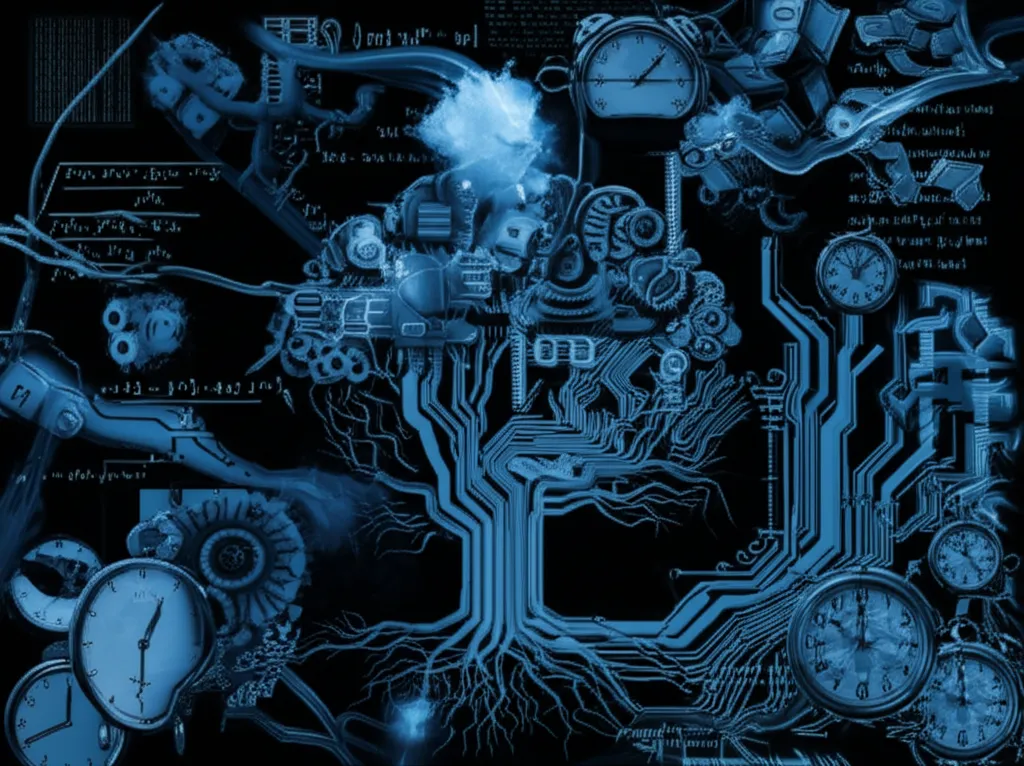It’s funny how quickly tech jargon can overrun a conversation—just last week, over breakfast, my mom asked if her phone had a 'neural network.' (She thought it was something to do with migraines.) If you’re like her (or me, honestly), the term sounds both technical and mysterious. But, here's a secret: learning how neural networks work is less about math and more about thinking like a machine, one tiny step at a time. Follow me as I recount the time I tried to teach my dog to recognize socks from shoes, and how, oddly enough, it mirrors how neural networks work.
From Sock Sorting to Neural Network Layers: The Anatomy of a Digital Brain
Let me start with a story that might sound familiar to anyone who’s ever tried to teach a pet something new. A while back, I decided to teach my dog the difference between socks and shoes. My goal was simple: when I held up a sock, he’d sit; when I held up a shoe, he’d lie down. Easy, right? Well, not quite. The first few attempts were a mess—he’d sit for both, lie down for neither, or just stare at me, clearly wondering what all the fuss was about. But as we kept practicing, something changed. He started picking up on subtle cues: the shape, the color, maybe even the smell. Eventually, he got it right more often than not.
This little experiment got me thinking about how we, as humans, learn to distinguish between things—how we process information, make decisions, and adapt when we get things wrong. It’s not so different from how neural networks, the backbone of modern artificial intelligence, learn to “think.” In fact, research shows that neural networks are designed to mimic the way our brains process information, using layers of interconnected “neurons” to transform raw data into meaningful decisions.
Layers of Learning: Input, Hidden, Output
Let’s break down the anatomy of a neural network. At its core, a neural network is made up of three main types of layers: input, hidden, and output. Each layer has a specific role, and together, they form the digital equivalent of a brain.
Input Layer: This is where the network receives information—much like my dog seeing the sock or shoe for the first time. The input layer doesn’t do any thinking; it simply passes the data along.
Hidden Layers: Here’s where the magic happens. These layers process the data, looking for patterns and relationships. In my dog’s case, this would be the mental work of noticing the sock’s texture or the shoe’s shape. Neural networks can have one or many hidden layers, and research indicates that adding more hidden layers allows the network to handle more complex data and tasks.
Output Layer: This layer delivers the final decision—sit or lie down, cat or dog, spam or not spam. The output is the result of all the processing that happened in the hidden layers.
Each “neuron” in these layers is connected to others by weighted links. These weights determine how much influence one neuron has on another, and they’re adjusted as the network learns, much like how my dog gradually figured out which cues mattered most. There’s also something called a bias term, which helps the network fine-tune its decisions. Studies indicate that adjusting these weights and biases during training is crucial for optimizing performance.
Everyday Decisions: Neural Networks in Action
Think about the choices you make every day. When you decide what to wear, you’re unconsciously processing inputs (the weather, your plans, what’s clean), weighing options, and producing an output (today’s outfit). Neural networks operate in a similar way, just much faster and on a much larger scale.
For example, consider image recognition in social media apps—the “cat-detecting magic” on your phone. When you upload a photo, the app’s neural network scans the image, breaking it down into pixels (input layer). The hidden layers analyze patterns: Is there fur? Pointy ears? Whiskers? After processing, the output layer delivers its verdict: “Cat detected!” This process relies on activation functions within each neuron, which transform the weighted sum of inputs into outputs, helping the network make nuanced decisions.
The learning process itself is a cycle. During the feedforward phase, data moves through the network, producing an output. If the output is wrong—say, the app mistakes your dog for a cat—a loss function measures the error. Then, through backpropagation, the network adjusts its weights and biases to do better next time. It’s not so different from my dog learning from his mistakes, just at a much greater speed and scale.
Neural networks are now foundational to deep learning and artificial intelligence, powering everything from voice assistants to predictive analytics. Their architecture can be simple or incredibly complex, depending on the problem at hand. But at their heart, they’re all about learning from experience—just like us, and sometimes, just like a determined dog sorting socks from shoes.
Why Neurons Need Coffee: Activation Functions, Weighted Sums, and the Morning Learning Process
When I first started learning about neural networks, I found myself picturing each artificial neuron as a groggy student in a morning math class. You know the type—head on the desk, eyes half-closed, not quite ready to participate until that first sip of coffee kicks in. In the world of neural networks, that “coffee” is what we call the activation function. It’s the mechanism that determines whether a neuron wakes up and fires, or stays dormant, based on the information it receives.
This analogy may sound playful, but it’s surprisingly apt. Research shows that each neuron in a neural network receives a set of inputs, processes them, and then decides—using its activation function—whether to “wake up” and pass its signal forward. Without this crucial step, the network would be nothing more than a collection of passive nodes, incapable of making decisions or learning from data.
Weighted Sums: The Breakfast Decision
Let’s take this morning routine a step further. Imagine you’re deciding what to have for breakfast. You weigh your options: cereal, eggs, maybe just coffee. Each choice is influenced by different factors—how much time you have, what you’re craving, what’s available in the fridge. In neural networks, these factors are represented as weights.
Every connection between neurons has a weight, which determines how much influence one neuron’s output has on the next. If you’re really hungry, the “eggs” option might have a higher weight. If you’re in a rush, “just coffee” might win out. The neuron takes all these inputs, multiplies each by its respective weight, and adds them up. This is called the weighted sum.
Mathematically, it looks something like this:
output = activation(weight1 * input1 + weight2 * input2 + ... + bias)
The bias term is like your personal preference—maybe you always lean toward coffee, no matter what. Once the neuron calculates this weighted sum, it passes the result through its activation function. If the sum is high enough—if the “coffee” is strong enough—the neuron fires. Otherwise, it stays quiet.
Activation Functions: The Morning Jolt
Activation functions come in many forms, but their job is always the same: to introduce non-linearity and help the network make complex decisions. Some popular choices include the sigmoid, ReLU (Rectified Linear Unit), and tanh functions. Each has its own personality. For example, the ReLU function only fires if the input is positive—like a student who only perks up after a certain caffeine threshold.
“Each neuron in a neural network uses an activation function to transform the weighted sum of inputs into an output.” — Research on neural network fundamentals
Without activation functions, neural networks would be limited to solving only the simplest problems. They’d be like students who can only answer yes-or-no questions, never tackling the more nuanced challenges that require real thinking.
The Learning Process: Embracing Mistakes
Learning, whether for humans or machines, is rarely smooth. Neural networks learn by making mistakes—lots of them. They start out guessing, often getting things hilariously wrong. Then, through a process called backpropagation, they adjust their weights and biases to do better next time. Studies indicate that this process, which involves comparing the network’s output to the correct answer and tweaking the weights accordingly, is at the heart of machine learning.
I’ll never forget my own “first-try” moment in high school math class. We were learning quadratic equations, and I was so sure I had the answer. I marched up to the board, wrote out my solution with confidence—and promptly got it wrong. The embarrassment stung, but the lesson stuck. I went home, practiced, and eventually got it right. Neural networks do something similar: they try, fail, learn from the error, and try again. Over time, those mistakes become less frequent, and the network—like the student—gets better at solving problems.
This cycle of trial, error, and adjustment is what allows neural networks to tackle everything from image recognition to language translation. The architecture may be inspired by the brain, but the process is pure persistence—one cup of coffee, one weighted sum, one lesson at a time.
Learning is Messy: Training the Network (and Yourself) Through Mistakes and Losses
When I first started learning about neural networks, I was struck by how much their training process mirrors the way we, as humans, learn from our own mistakes. It’s not a clean, linear path—far from it. The journey is often chaotic, full of missteps, and, if I’m honest, a little humbling. But that’s exactly where the magic happens, both for machines and for us.
Let’s start with the concept of backpropagation. In neural networks, backpropagation is the process that allows the system to learn from its errors. Imagine you’re trying out a new recipe. You follow the steps, but the result is disappointing—maybe the cake is too dense, or the flavors don’t quite work. That sense of disappointment, the “pain” of failure, is what motivates you to tweak the recipe next time. You might add a bit more baking powder, or swap out an ingredient. In the world of neural networks, this pain is quantified by something called the loss function.
The loss function acts as a kind of scoreboard. Every time the network makes a prediction, the loss function measures how far off the result is from the correct answer. If the network’s guess is way off, the loss score is high—almost like losing points in a game every time you make a mistake. This score isn’t just for show; it’s the driving force behind learning. The network uses this feedback to adjust its internal settings, known as weights and biases, so that next time, it’s a little closer to getting things right.
Research shows that this process of adjusting weights and biases through backpropagation is fundamental to how neural networks improve over time. As each round of training unfolds, the network becomes better at recognizing patterns and making accurate predictions. It’s a cycle of trial, error, and adjustment—a process that, frankly, feels familiar to anyone who’s ever tried to master a new skill.
I remember my own “loss function moment” vividly. It was my first attempt at parallel parking. I was nervous, trying to recall every step I’d been taught, but the result was, well, ugly. I ended up at a strange angle, too far from the curb, and blocking part of the street. Embarrassing? Absolutely. But instructive. That failure stuck with me, and the next time I tried, I made small adjustments—turning the wheel a bit sooner, checking my mirrors more carefully. Each mistake was a data point, a nudge to do better. In a sense, my brain was running its own backpropagation algorithm, learning from the “loss” and updating my approach.
This messy, iterative process is at the heart of both human and machine learning. Neural networks, much like our own minds, don’t start out knowing everything. They make mistakes—sometimes spectacular ones. But with each error, they gather information, refine their internal models, and gradually improve. Studies indicate that the most effective learning happens not when everything goes smoothly, but when there’s room to stumble, reflect, and adapt.
What’s fascinating is how this process scales. In neural networks, the complexity of the architecture—the number of hidden layers, the intricacy of the connections—can be increased to tackle more challenging problems. But no matter how sophisticated the network becomes, the core principle remains: learning is driven by loss, by the willingness to confront mistakes and use them as fuel for growth.
So, whether you’re training a neural network or trying to master parallel parking, remember: progress is rarely tidy. The setbacks, the awkward failures, the moments when you feel like you’re getting nowhere—these are not signs of weakness, but essential parts of the learning journey. Embrace the mess. Let the loss function do its work. And trust that, with each iteration, you’re getting closer to mastery—one mistake at a time.



